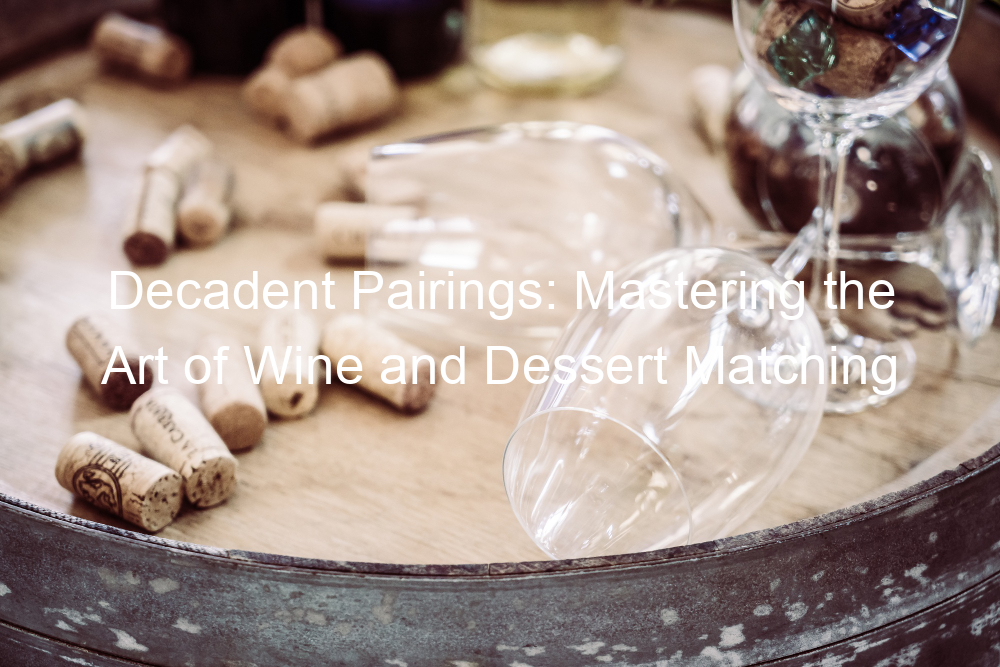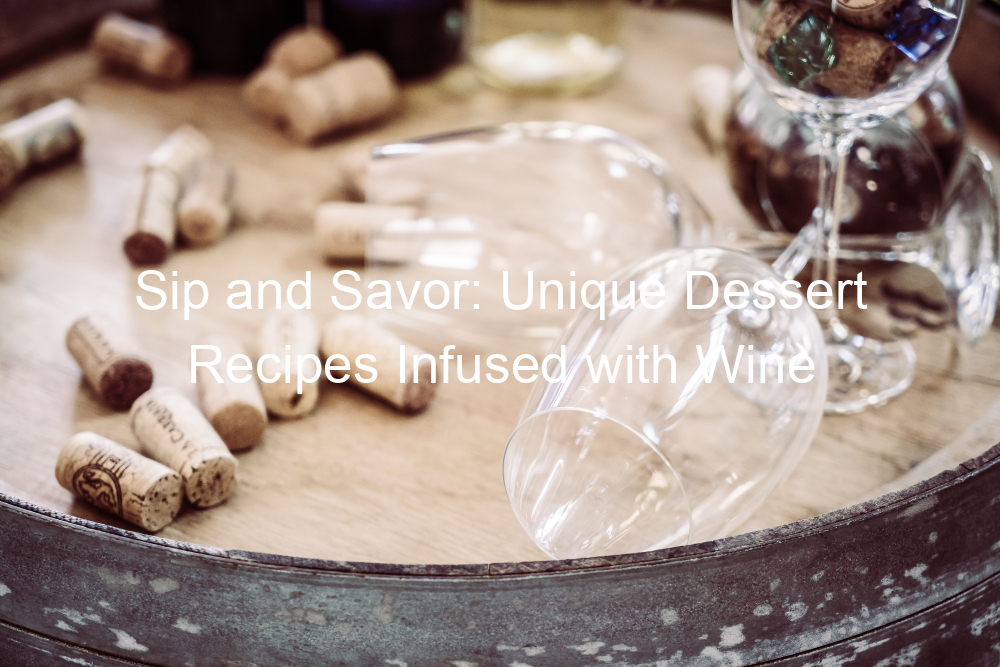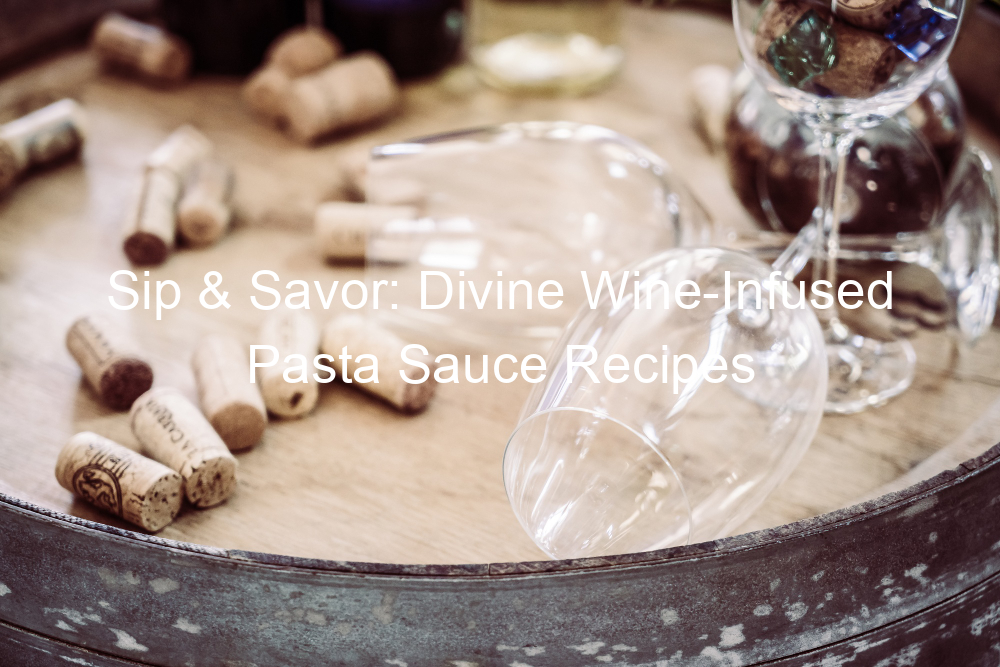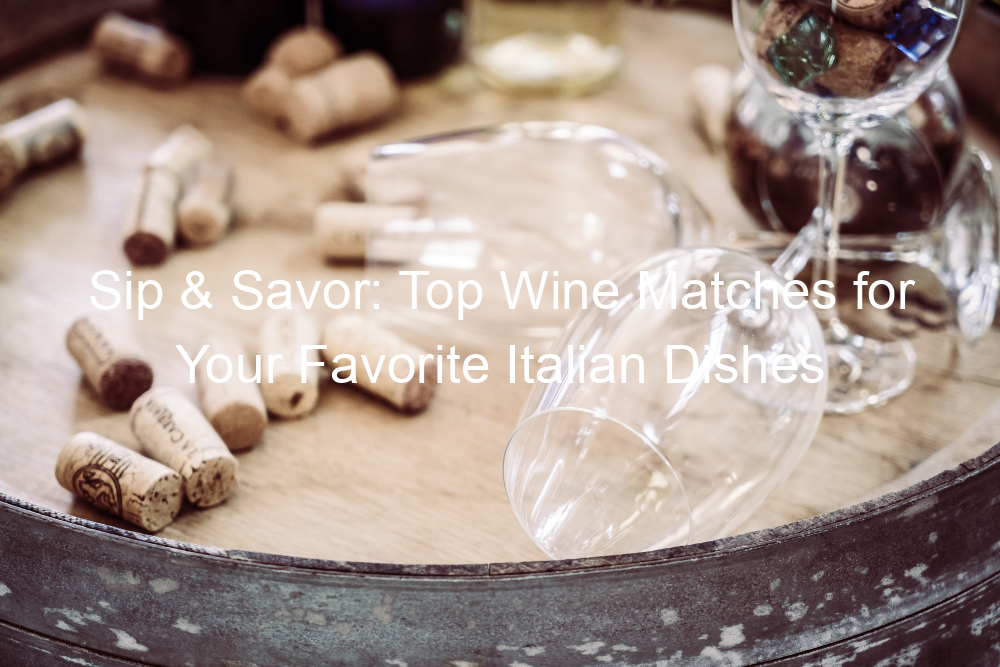
Introduction to Pairing Wine with Desserts
When it comes to enjoying a meal, the dessert and wine pairing is often the grand finale. It’s the last note that can either make or break the entire dining experience. But how do we ensure that this final act is a showstopper? Let’s dive into the world of pairing wine with desserts!
- The Importance of Pairing Wine with Desserts
- Understanding the Basics of Wine and Dessert Combinations
Pairing wine with desserts is not just about adding a touch of elegance to your meal. It’s about enhancing the flavors and creating a balance between the sweetness of the dessert and the characteristics of the wine. A well-paired wine can elevate a simple dessert into a gourmet experience. It’s like a beautiful dance where each partner complements the other, creating a harmonious performance that leaves a lasting impression.
Pairing wine with desserts might seem complicated, but it’s all about understanding the basics. The first rule of thumb is that the wine should be at least as sweet as the dessert. If the wine is less sweet, it may taste sour or flat. Another important factor is the flavor intensity. A light, delicate dessert like a lemon sorbet will be overwhelmed by a robust, full-bodied wine. On the other hand, a rich, decadent chocolate cake requires a wine with enough character to stand up to its powerful flavors.
Remember, the key to successful pairing is experimentation. Don’t be afraid to try different combinations and discover what works best for your palate. After all, the joy of food and wine pairing lies in the journey as much as the destination. So, grab a bottle of your favorite wine, whip up a dessert, and start exploring the wonderful world of wine and dessert pairing!
A Comprehensive Guide to Wine Pairing
Pairing wine with food can be a delightful experience. When done right, it can enhance the flavors of both the food and the wine, creating a memorable dining experience. In this guide, we’ll focus on pairing wine with desserts.
Wine Pairing for Desserts: The Basics
Pairing wine with desserts can be a bit tricky. The sweetness of the dessert can often overpower the flavor of the wine. But don’t worry, we’re here to help you understand the basics of wine pairing for desserts.
- Understanding the flavor profiles of different wines
- How sweetness, acidity, and tannins affect wine pairing
Wines come in a variety of flavors, from fruity and sweet to dry and bitter. Understanding these flavor profiles is the first step in successful wine pairing. For example, a sweet dessert might pair well with a sweet wine, while a tart dessert might pair better with a dry wine.
When pairing wine with desserts, it’s important to consider the sweetness, acidity, and tannin levels of the wine. Sweetness in wine can balance the sweetness in the dessert, while acidity can cut through rich, creamy desserts. Tannins, on the other hand, can add a bitter taste, which can complement sweet desserts.
Remember, the key to successful wine pairing is balance. You don’t want the wine to overpower the dessert, or vice versa. Experiment with different combinations to find what works best for you.
Dessert Wine Pairing Tips
When it comes to pairing wine with desserts, there are a few key tips to keep in mind. These tips will help you balance the sweetness of your dessert with your wine, choose the right wine for chocolate desserts, and select the best wine choices for fruit-based desserts.
-
How to Balance the Sweetness of Your Dessert with Your Wine
It’s important to remember that your wine should be at least as sweet as your dessert. If the wine is less sweet, it may taste sour or flat. For example, a sweet dessert like a chocolate cake pairs well with a sweet red wine like a Port. On the other hand, a less sweet dessert like a fruit tart might pair better with a less sweet white wine like a Riesling.
-
Choosing the Right Wine for Chocolate Desserts
Chocolate desserts can be tricky to pair with wine because of their rich, intense flavors. However, a rule of thumb is to pair dark chocolate with red wine, and milk chocolate with white wine. For example, a dark chocolate cake might pair well with a Cabernet Sauvignon, while a milk chocolate mousse might pair well with a Chardonnay.
-
Best Wine Choices for Fruit-Based Desserts
Fruit-based desserts are often best paired with white wines that have a hint of fruitiness. For example, a peach cobbler might pair well with a Moscato, which has notes of peach and apricot. Similarly, a strawberry shortcake might pair well with a Rosé, which has notes of strawberry and cherry.
Remember, the best wine pairing is the one that you enjoy the most. Don’t be afraid to experiment and find your own personal favorite combinations!
How to Choose Wine for Dessert
Choosing the perfect wine for dessert can seem like a daunting task. But don’t worry! We’re here to help. Let’s explore some delicious wine and dessert combinations that will make your taste buds sing.
Wine and Dessert Combinations
Pairing wine with dessert is an art. The right combination can enhance the flavors of both the wine and the dessert, creating a memorable dining experience. Here are some tips for pairing wine with different types of desserts:
- Pairing wine with chocolate desserts
- Pairing wine with fruit desserts
- Pairing wine with creamy desserts
Chocolate desserts are rich and decadent. They need a wine that can stand up to their robust flavors. Red wines, like a Cabernet Sauvignon or a Zinfandel, are excellent choices. These wines have strong fruit flavors that complement the chocolate without overpowering it. For a surprising twist, try a sparkling wine or champagne. The bubbles and acidity can cut through the richness of the chocolate, creating a balanced taste sensation.
Fruit desserts are often sweet and tangy. They pair well with a sweet white wine, like a Riesling or a Moscato. These wines have a hint of sweetness that complements the fruit, and their high acidity balances the sweetness of the dessert. For a unique pairing, try a rosé. The fruity notes in the wine can bring out the flavors in the dessert, creating a harmonious combination.
Creamy desserts, like cheesecake or panna cotta, are rich and smooth. They pair well with a sweet, fruity wine, like a late harvest Riesling or a Sauternes. These wines have a high sugar content that matches the sweetness of the dessert, and their fruity flavors complement the creaminess of the dessert. For a contrasting pairing, try a dry sparkling wine. The bubbles and acidity can cut through the creaminess of the dessert, creating a refreshing palate cleanser.
Remember, the best wine and dessert pairing is the one you enjoy the most. So don’t be afraid to experiment and find your own perfect combination!
Best Wine for Dessert Pairing
Choosing the right wine for your dessert can make a good meal great. Here are some top choices and unexpected pairings that can delight your taste buds.
- Top Choices for Dessert Wines
- Port: This sweet red wine from Portugal is perfect for pairing with chocolate desserts. Its rich, fruity flavors complement the bitterness of dark chocolate.
- Moscato: This light, sweet wine is excellent with fruit desserts. Its fruity and floral notes enhance the natural sweetness of the fruit.
- Sauternes: This French wine is a great match for creamy desserts. Its sweetness balances the richness of the cream.
- Unexpected but Delightful Wine and Dessert Pairings
- Champagne and Popcorn: The crispness of the champagne cuts through the buttery popcorn, creating a surprisingly delightful combination.
- Merlot and Dark Chocolate: The full-bodied red wine enhances the rich flavors of dark chocolate, making for a decadent treat.
- Riesling and Apple Pie: The sweetness and acidity of the Riesling perfectly balance the tartness of the apples, making this a delicious pairing.
When it comes to dessert wines, some choices stand out. Here are a few:
While traditional pairings are always a safe bet, don’t be afraid to experiment. Here are some unexpected but delightful pairings:
Remember, the best wine and dessert pairing is the one you enjoy the most. So, don’t be afraid to experiment and find your own perfect match.
Guide to Pairing Wine and Desserts
Pairing wine and desserts can be a fun and delicious experience. Let’s explore some case studies to understand how to do it right.
Dessert Wine Pairing Guide: Case Studies
Here are two case studies that will help you understand the art of pairing wine with desserts.
- Case study 1: Pairing wine with a chocolate lava cake
- Case study 2: Pairing wine with a lemon tart
Chocolate lava cake is a rich, decadent dessert that requires a wine with enough body to stand up to its intense flavor. A good choice would be a full-bodied red wine like a Cabernet Sauvignon. This wine’s robust flavor and high tannin content can balance the sweetness and richness of the chocolate.
Lemon tart is a dessert with a tangy, citrusy flavor. A dessert wine like a Moscato d’Asti or a Sauternes would be a great match. These wines have a sweet, fruity flavor that can complement the tartness of the lemon. The effervescence of the Moscato can also add a refreshing contrast to the creamy texture of the tart.
Remember, the key to a successful wine and dessert pairing is balance. The wine should not overpower the dessert, and vice versa. Experiment with different combinations to find your perfect match!
Key Takeaways
- Summary of the Principles of Dessert Wine Pairing
- Final Tips and Tricks for Mastering the Art of Wine and Dessert Matching
- Don’t be afraid to experiment. The ‘rules’ of wine pairing are more like guidelines, and personal preference plays a big role.
- Consider the weight and texture of both the wine and the dessert. A light dessert needs a light wine, while a heavy dessert needs a robust wine.
- Think about the main flavors in the dessert and try to match them with similar flavors in the wine. For example, a dessert with citrus notes might pair well with a wine that has hints of lemon or grapefruit.
- When in doubt, a sparkling sweet wine like Champagne or Prosecco is a safe bet. The bubbles and acidity can cut through the sweetness of almost any dessert.
Pairing wine with desserts is an art that requires understanding the balance between sweetness and acidity. The key principle is that the wine should be at least as sweet, if not sweeter, than the dessert. This ensures that the wine doesn’t taste bitter or sour. For instance, rich chocolate desserts pair well with bold, sweet red wines like Port, while light, fruity desserts are complemented by sweet white wines like Moscato or Riesling. Remember, the goal is to enhance the flavors of both the dessert and the wine, creating a harmonious taste experience.
Mastering the art of wine and dessert pairing is a journey of exploration and discovery. Here are some final tips to help you on your way:
Remember, the most important thing is to enjoy the process and have fun with it!






